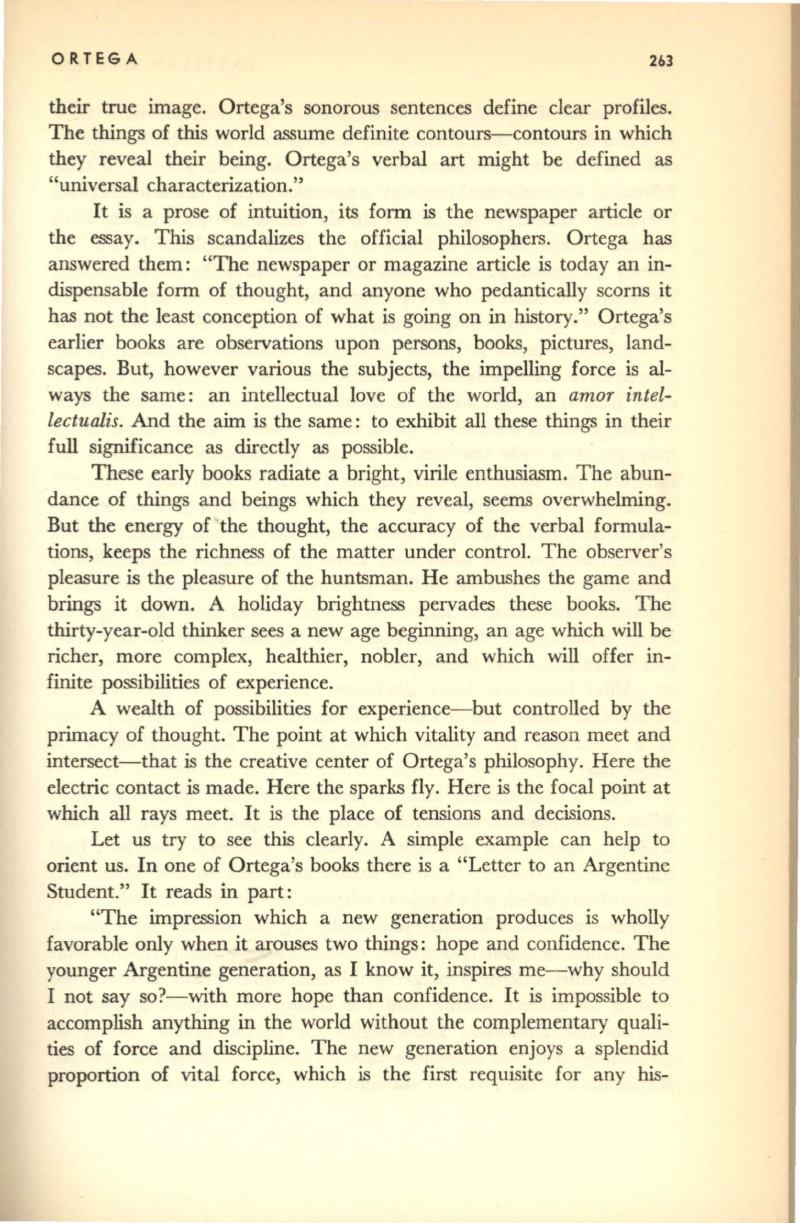
ORTEGA
263
their true image. Ortega's sonorous sentences define clear profiles.
The things of this world assume definite contours-contours in which
they reveal their being. Ortega's verbal art might be defined as
"universal characterization."
It is a prose of intuition, its form is the newspaper article or
the essay. This scandalizes the official philosophers. Ortega has
answered them: "The newspaper or magazine article is today an in–
dispensable form of thought, and anyone who pedantically scorns it
has not the least conception of what is going on in history." Ortega's
earlier books are observations upon persons, books, pictures, land–
scapes. But, however various the subjects, the impelling force is al–
ways the same: an intellectual love of the world, an
amor intel–
lectualis.
And the aim is the same: to exhibit all these things in their
full significance as directly as possible.
These early books radiate a bright, virile enthusiasm. The abun–
dance of things and beings which they reveal, seems overwhelming.
But the energy of the thought, the accuracy of the verbal formula–
tions, keeps the richness of the matter under control. The observer's
pleasure is the pleasure of the huntsman. He ambushes the game and
brings it down. A holiday brightness pervades these books. The
thirty-year-old thinker sees a new age beginning, an age which will be
richer, more complex, healthier, nobler, and which will offer in–
finite possibilities of experience.
A wealth of possibilities for experience- but controlled by the
primacy of thought. The point at which vitality and reason meet and
intersect-that is the creative center of Ortega's philosophy. Here the
electric contact is made. Here the sparks fly. Here is the focal point at
which all rays meet. It is the place of tensions and decisions.
Let us try to see this clearly. A simple example can help to
orient us. In one of Ortega's books there is a "Letter to an Argentine
Student." It reads in part:
"The impression which a new generation produces is wholly
favorable only when it arouses two things: hope and confidence. The
younger Argentine generation, as I know it, inspires me- why should
I not say so?-with more hope than confidence. It is impossible to
accomplish anything in the world without the complementary quali–
ties of force and discipline. The new generation enjoys a splendid
proportion of vital force, which is the first requisite for any his-


